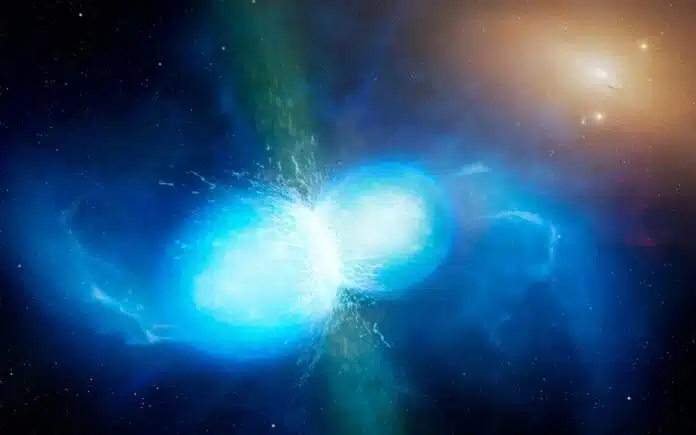
By Amit Malewar 14 Aug, 2024
Collected at: https://www.techexplorist.com/neutron-star-mergers-shedding-light-quark-matter-mysteries/87217/
Neutron star collisions or binary mergers are very rare. But when they occur, they could disturb spacetime, producing detectable gravitational waves on Earth.
During this event, the stars quickly change shape and get hotter, causing the matter inside them to change. The merger also creates quark matter, in which quarks and gluons- usually stuck inside protons and neutrons– can move freely.
Scientists from the University of Helsinki used two innovative theoretical methods to understand better how quark matter behaves under the extreme conditions produced in these violent events.
The bulk viscosity of neutron-star matter is one of the key concepts in the neutron-star mergers study. It describes how the interaction between particles restricts flow in the system.
In this study, scientists combined two different theoretical methods to determine the bulk viscosity of dense quark matter. One approach was based on string theory, while the other was built on perturbation theory, a classic method of quantum field theory.
In general, viscosity describes the stickiness of a given liquid’s flow. Bulk Viscosity describes energy loss in a system that undergoes radial oscillations, meaning that its density increases and decreases periodically. Such oscillations happen in neutron stars and during their mergers, making bulk viscosity the fundamental transport property in these events.
In the study, scientists determined the bulk viscosity of quark matter using holography and perturbation theory.
For quark matter, the holography approach helps describe the high densities and temperatures found in neutron star collisions, where quantum chromodynamics (QCD) interactions are very strong. However, because of technical limitations, this method can’t directly describe QCD; instead, it looks at a similar phenomenological model.
Perturbation theory is the most widely used tool in theoretical particle physics research. This method can describe QCD directly but only applies at densities far above those in neutron stars.
Scientists were surprised to see that both methods showed very similar results. This reinforces the idea that in quark matter, bulk viscosity peaks at much lower temperatures than nuclear matter.
Academy Research Fellow Risto Paatelainen from Helsinki said, “This information helps us understand the behavior of neutron-star matter during their binary mergers.”
University Lecturer Niko Jokela said, “These results may also aid the interpretation of future observations. We might for example look for viscous effects in future gravitational-wave data, and their absence could reveal the creation of quark matter in neutron-star mergers.”
Journal Reference:
- Jesús Cruz Rojas, Tyler Gorda, Carlos Hoyos, Niko Jokela, Matti Järvinen, Aleksi Kurkela, Risto Paatelainen, Saga Säppi, and Aleksi Vuorinen. Estimate for the Bulk Viscosity of Strongly Coupled Quark Matter Using Perturbative QCD and Holography. Physical Review Letters. DOI: 10.1103/PhysRevLett.133.071901

Leave a Reply